Winnie the Pooh was first conceived when a soldier, Harry Colebourn, adopted and brought a black bear cub to England from Winnipeg, Canada, after its mother had been killed by hunters He bought the bear from the hunter which killed its mother, and took it to London Zoo for a long loan. Christopher Robin favoured this bear and spent many an hour in the cage, playing with it. The bear was named Winnie, as a shortened version of the place whence he came. So, the bear became Christopher Robin's inspiration for calling his own teddy bear Winnie.
Friday, September 28, 2007
A Map of Pooh Country
A. A. Milne, who wrote Winnie the Pooh, set his stories in and around a village, named Hartfield, which is in East Sussex, southern England.
Winnie the Pooh was first conceived when a soldier, Harry Colebourn, adopted and brought a black bear cub to England from Winnipeg, Canada, after its mother had been killed by hunters He bought the bear from the hunter which killed its mother, and took it to London Zoo for a long loan. Christopher Robin favoured this bear and spent many an hour in the cage, playing with it. The bear was named Winnie, as a shortened version of the place whence he came. So, the bear became Christopher Robin's inspiration for calling his own teddy bear Winnie.
Winnie the Pooh was first conceived when a soldier, Harry Colebourn, adopted and brought a black bear cub to England from Winnipeg, Canada, after its mother had been killed by hunters He bought the bear from the hunter which killed its mother, and took it to London Zoo for a long loan. Christopher Robin favoured this bear and spent many an hour in the cage, playing with it. The bear was named Winnie, as a shortened version of the place whence he came. So, the bear became Christopher Robin's inspiration for calling his own teddy bear Winnie.
Saturday, September 22, 2007
Winnie The Pooh and Tigger Too
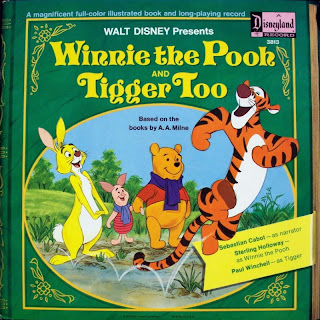
Winnie The Pooh and Tigger Too
Winnie The Pooh and Tigger Too



Winnie The Pooh and Tigger Too


Winnie The Pooh and Tigger Too
Wednesday, September 19, 2007
Winnie the pooh pictures
Winnie the pooh pictures
Today is Winnie the Pooh Day so the lovable animated bear
While Pooh Bear hasn't aged a bit since we met him, he is officially 82-years-old having first been sketched in A. A. Milne's book in 1926. Maybe that's why he has always seemed so wise.
Friends constantly look to him for help and Pooh's always willing to lend a hand asking only for a good dose of honey in return. Honey happens to be his food of choice.
his favorite phrase is "Do you have any honey?" Pooh's best friends are Christopher Robin, Tigger, Piglet, Eeyore, Roo, Rabbit, Kanga, and more recently Lumpy.
winnie the pooh pictures
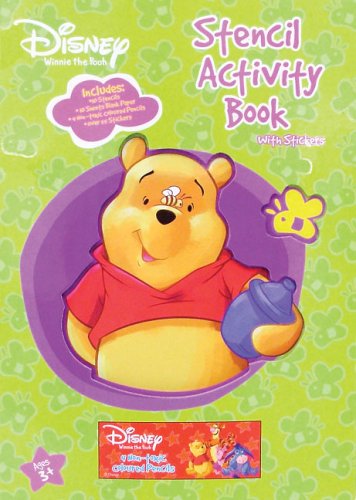

Friends constantly look to him for help and Pooh's always willing to lend a hand asking only for a good dose of honey in return. Honey happens to be his food of choice.
his favorite phrase is "Do you have any honey?" Pooh's best friends are Christopher Robin, Tigger, Piglet, Eeyore, Roo, Rabbit, Kanga, and more recently Lumpy.
winnie the pooh pictures


Winnie the pooh pictures
In April 2006, this Sugarbear, I mean Sugarbaby, was honored with a star on the Hollywood Walk of Fame. He's come a long way from pawning honey off the Funny Hunny Tree!Winnie the pooh pictures

Winnie the pooh pictures

Winnie the pooh pictures
Saturday, September 15, 2007
NYC - Donnell Library Center - Winnie-the-Pooh and Friends
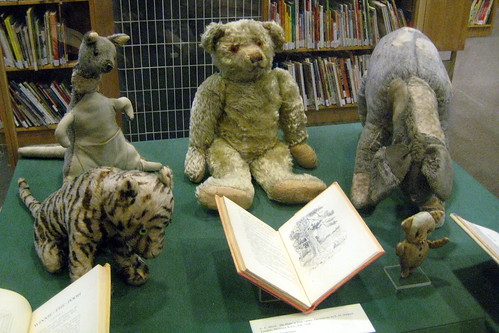 NYC - Donnell Library Center - Winnie-the-Pooh and Friends
NYC - Donnell Library Center - Winnie-the-Pooh and Friends
Winnie-the-Pooh and his friends Piglet, Eeyore, Kangna, and Tigger are the original toy animals that inspired the timeless classics by A.A. Mile illustrated by Ernest H. Shepard. When We Were Very Young (1924), Winnie-the-Pooh (1926), and The House at Pooh Corner (1928) were first published in England by Methuen Company, Ltd, and in America by E.P. Dutton Company, Ltd.
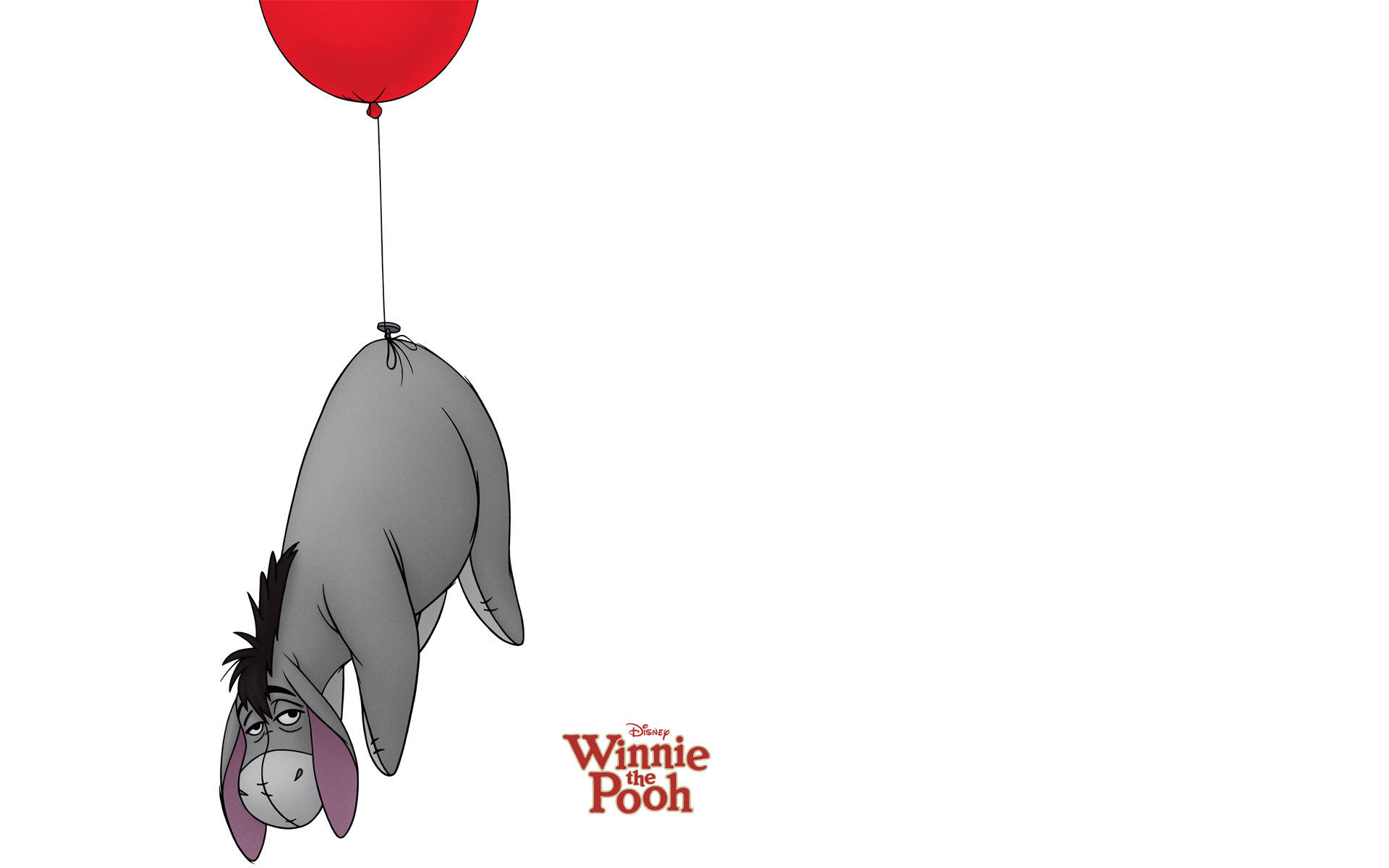
The House at Pooh Corner is the second volume of stories about Winnie-the-Pooh, by A. A. Milne, notable for the introduction of the character Tigger. The title comes from a story in which Winnie-the-Pooh and Piglet build a house for Eeyore. Hints that Christopher Robin is growing up, scattered throughout the book, come to a head in the final chapter, in which the inhabitants of the Hundred Acre Wood throw him a farewell party after learning that he must leave them soon--to attend boarding school, it is implied. In the end, as they say good-bye to Christopher Robin, they realize their time together is ending.
Chapter 2, 8, and 9 were adapted into animation with the Disney featurette Winnie the Pooh and the Blustery Day. Similarly, chapters 4 and 7 were adapted into Winnie the Pooh and Tigger Too!, while chapter 6 was adapted in Winnie the Pooh and a Day for Eeyore. Chapter 8 was also partially adapted into an episode of The New Adventures of Winnie the Pooh (entitled The Masked Offender). The final chapter was adapted as a closure to The Many Adventures of Winnie the Pooh, as well as in the direct-to-video movie Pooh's Grand Adventure: The Search for Christopher Robin. However in the book, Christopher was going to boarding school and wouldn't be coming back but in the films he was just going to school and would come back at the end of the day.

Winnie-the-Pooh and Friends
Long before Walt Disney turned Pooh and his pals into movie stars, Christopher Robin Milne, a very real little boy living in England, received a small stuffed bear on his first birthday. Pooh Bear was bought at Harrods in London for Christopher Robin's first birthday. The toys were brought to the United States in 1947 and remained with the American publisher. In 1987, the toys were donated to The New York Public Library, and housed in the Central Children's Room in the Donnell Library Center on 53rd Street. The toys vacated the Center in May of 2008 in advance of the bulding's tear-down to make way for a luxury hotel.Chapter 2, 8, and 9 were adapted into animation with the Disney featurette Winnie the Pooh and the Blustery Day. Similarly, chapters 4 and 7 were adapted into Winnie the Pooh and Tigger Too!, while chapter 6 was adapted in Winnie the Pooh and a Day for Eeyore. Chapter 8 was also partially adapted into an episode of The New Adventures of Winnie the Pooh (entitled The Masked Offender). The final chapter was adapted as a closure to The Many Adventures of Winnie the Pooh, as well as in the direct-to-video movie Pooh's Grand Adventure: The Search for Christopher Robin. However in the book, Christopher was going to boarding school and wouldn't be coming back but in the films he was just going to school and would come back at the end of the day.

Winnie-the-Pooh and Friends
Coloring pictures of tweety bird
Back to the coloring page database. Enjoy this selection of Tweety Bird coloring pages
Coloring pictures of tweety bird


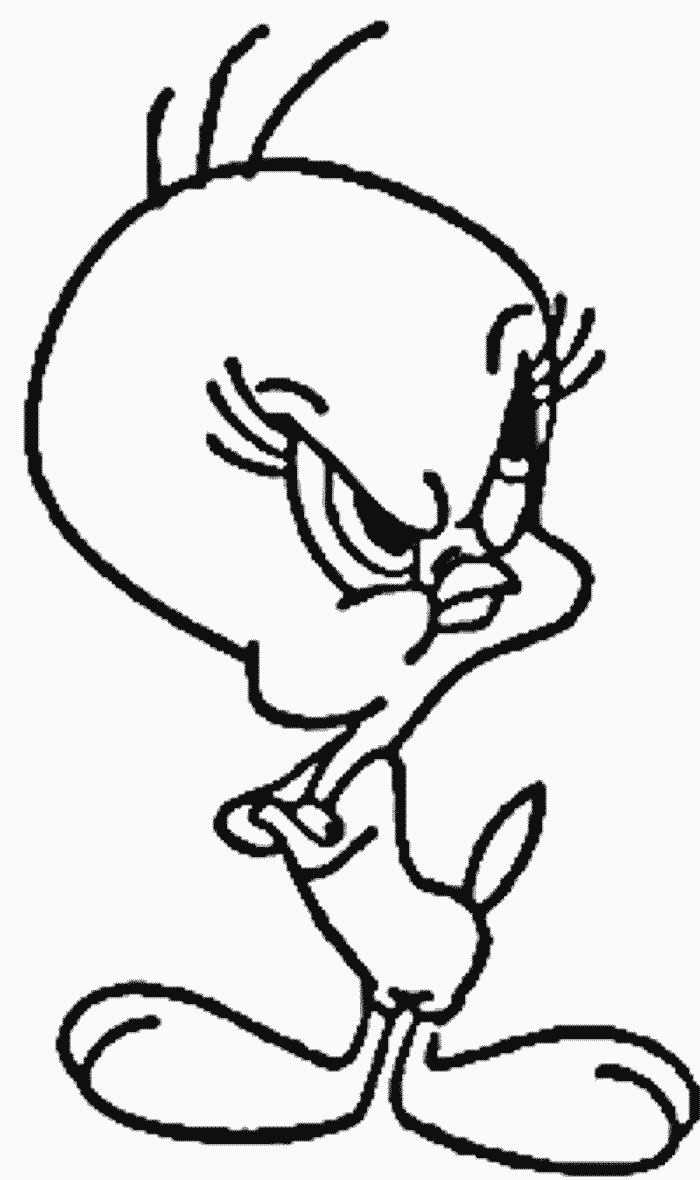

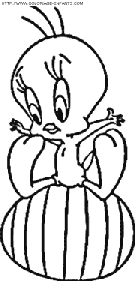

Coloring pictures of tweety bird
Wednesday, September 12, 2007
Cute Winnie The Pooh Backgrounds


Cute Winnie The Pooh Backgrounds
Tigger And Pooh - What a cute picture this is of Winnie The Pooh and Tigger inside Poohs home. From my screen saver, A Tiggerific Band, which was posted earlier. Music by Nitty Gritty Dirt Band, House At Pooh Corner. Enjoy Wally.
Cute Winnie The Pooh Backgrounds



Cute Winnie The Pooh Backgrounds
Tuesday, September 11, 2007
The 'SpongeBob SquarePants' Production Process
 Sponge Bob
Sponge Bob
 Sponge Bob
Sponge BobIn 1993, six years before "SpongeBob SquarePants" debuted, creator Stephen Hillenburg was one of the producers on another Nickelodeon cartoon, "Rocko's Modern Life." When that show completed production in 1996, Hillenburg began working on "SpongeBob." To get the project off the ground, Hillenburg put together a team. Creative Director, Derek Drymon, writer Tim Hill, and voice actors Tom Kenny and Doug Lawrence had all worked on "Rocko's Modern Life" with Hillenburg. In addition, Merriwether Williams, who had Nickelodeon cartoon experience as a story editor for "Angry Beavers," joined the "SpongeBob" team of creators.
Hillenburg created a cast of characters. He filled the undersea town with places for the characters to live, work, and get into situations that would make them famous. When Hillenburg was ready to present the show's concept to Nickelodeon, he used all of his interests and skills to make a presentation that would sell the concept. He brought in an aquarium, artwork, sculpted characters, and an original theme song that explained the storyline of the cartoon.

"We know that children have an appetite for new stuff; we are always on a mission to bring them new stuff. But we also know that one of the things that make them come back for more is having real characters that they can connect to emotionally," said Cyma Zarghami, Nickelodeon's president and the head of MTVN Kids and Family Group, in an interview with Worldscreen. "We pay a lot of attention to story and character. 'SpongeBob' came along at a time when people seemed to really need an optimistic character to rally behind."
The rest is animated sitcom history. "SpongeBob" has been soaking up rave reviews ever since. Nicole Parker, senior director of communications for Nickelodeon and Nicktoons Network, told us that even after four successful seasons, Hillenburg weighs in on every show to ensure the scripts remain true to his original vision.
Sponge Bob

Sponge Bob
How the 'SpongeBob SquarePants' Production Process WorksStory editor Steven Banks and writing coordinator Melissa Webster, both in the Burbank offices of Nickelodeon where "SpongeBob SquarePants" is produced, spoke with us about how they create a show from start to finish.
"From beginning to end, it takes ten or eleven months to create one eleven-minute long episode." Webster said. "Writers submit premises and outlines for stories, but they don't write the script. Their story ideas must then be submitted to the Network for approval. Once a premise is approved it goes to the storyboard directors who write the dialogue and draw all the pictures."
"It's a board-driven show," Banks said. In other words, the storyboards are followed for dialogue, action, and sound effects. But before the storyboard stage, Banks and the three writers who work under him must create stories and "pitch" or present them to the co-cxecutive producer, Paul TIbbitt.
"It's very challenging to come up with 40 different stories per season. Each show features two stories. In the four seasons the show has been running, that adds up to 160 different stories," Banks said. "One of the things that makes 'SpongeBob' work so well is the fact that there are not too many characters to keep track of. However, that is also what makes creating new stories all the time more difficult."
Once the storyboards are completed and approved, they are sent to Korea, where the animation is done. "When animation is complete, it is sent back to us, and Paul Tibbitt decides where music should be added and where the sound effects fit in. He turns it over to Nick Carr, who selects the music. Sound effects are added last, the final mix is done, and the show is finished," Banks said.
Sponge Bob

Sponge Bob
E. H. Shepard - The Man Who Drew Pooh
e.h.shepard, the man who drew pooh Winnie the Pooh and friends Piglet, Eeyore, and Christopher Robin are all coming to Stirling this Summer in a special exhibition from the Shepard Archive at the University of Surrey.

Their creator, Ernest Howard Shepard (1879-1976) was a versatile and prolific artist who also painted portraits and landscapes in addition to his illustrations and cartoons for Punch. He fought in the First World War and recorded the events he witnessed, but it was as an illustrator of children's books, especially his partnership with A. A. Milne for which Shepard gained international recognition.
His most famous publications include When We Were Very Young (1924), Winnie the Pooh (1926), Now We are Six (1927), The House at Pooh Corner (1928) and The Wind in the Willows (1931) for Kenneth Grahame.
After 1945 he illustrated over twenty books. In 1957 he published the first of his two autobiographies Drawn from Memory, recalling his Victorian childhood, followed by Drawn from Life in 1961 which continued the story of his student life at art school, his engagement and launch of his career. He married twice, his first wife Florence Chaplin died in 1927 by whom he had two children. His son Graham was killed in action in World War II. In 1972 E. H. Shepard was appointed O.B.E. He died in 1976, leaving his widow Norah. e.h.shepard, the man who drew pooh

The exhibition, entitled The Man Who Drew Pooh will be officially opened on Friday 6 June at 7.30pm by Provost Colin O'Brien.
The exhibition will reflect E. H Shepard's whole career and includes over seventy illustrations, original letters, books from manuscript to copy together with small amounts of memorabilia and toys.
Monday, September 10, 2007
History about Winnie-the-Pooh
During the first World War troops from Winnipeg (Manitoba, Canada) were being transported to eastern Canada, on their way overseas to Europe where they should join the 2nd Canadian Infantry Brigade. When the train stopped at White River, Ontario, a lieutenant called Harry Colebourn bought a small female black bear cub for $20 from a hunter who had killed its mother. He named her 'Winnipeg', after his hometown of Winnipeg, or 'Winnie' for short.
 History about Winnie-the-Pooh
History about Winnie-the-PoohWinnie became the mascot of the Brigade and went to Britain with the unit. When the Brigade was posted to the battlefields of France, Lt. Colebourn took Winnie to the London Zoo for a long loan. Formally Colebourn presented the London Zoo with Winnie in December 1919 where it became a popular attraction and lived until 1934.
The bear was also very popular by Christopher Robin, son of author A.A. Milne. It was his favorite at the zoo, and he often spent time inside the cage with it. The bear was Christopher Robin's inspiration for calling his own teddy bear Winnie.... Winnie the Pooh (this teddy bear started out with the name of Edward Bear). The name of Pooh originally belonged to a swan, as can be seen in a poem from Milne's When We Were Very Young.
A.A. Milne started to write a series of books about Winnie the Pooh, his son Christopher Robin, and their friends at 100-Aker-Wood. These other characters, such as Eeyore, Piglet, Tigger, Kanga and Roo were also based on stuffed animals belonging to Christopher Robin. Other characters as Rabbit and Owl were based on animals that lived, just like the swan Pooh, in the surrounding area of Milne's country home Cotchford Farm in Ashdown Forest, Sussex, on which 100-Aker-wood was based.
'Winnie-the-Pooh' was published by Methuen on October 14th, 1926, the verses 'Now We are Six' in 1927, and 'The House at Pooh Corner' in1928. All these books were illustrated in a beautiful way by E.H. Shepard, which made the books even more magical. The Pooh-books became firm favourites with old and young alike and have been translated into almost every known language. A conservative figure for the total sales of the four Methuen editions (including When We Were Very Young) up to the end of 1996 would be over 20 million copies. These figures do not include sales of the four books published by Dutton in Canada and the States, nor the foreign-language editions printed in more than 25 languages the world over!
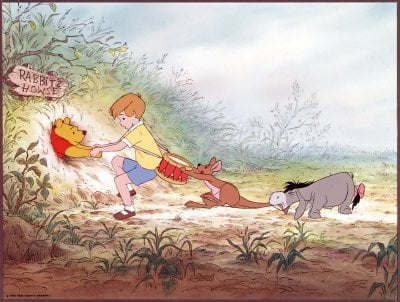 History about Winnie-the-Pooh
History about Winnie-the-PoohThe Pooh-books had also been favourites of Walt Disney's daughters and it inspired Disney to bring Pooh to film in 1966. In 1977 'the Many Adventures of Winnie the Pooh', the first feature-length animated film of Pooh was released. In 1993, the Walt Disney Company acknowledged that Pooh Bear is second only to Mickey Mouse in their portfolio of the most-loved and trusted characters known to millions of people all the world over. By 1996, after the second release of 'the Many Adventures of Winnie the Pooh', the Bear of Very Little Brain had proved to be more popular than any other Disney character. In 1997, thirty years after the release of 'the Many Adventures of Winnie the Pooh', Disney released 'Pooh's Grand Adventure', picking up where Disney's 22nd Masterpiece left off.

History about Winnie-the-Pooh
Sunday, September 9, 2007
Winnie The Pooh Book

Winnie The Pooh Books

Winnie The Pooh Books
Portions of the book were adapted from previously published stories. The first chapter, for instance, was adapted from "The Wrong Sort of Bees", a story published in the London Evening News in its issue for Christmas Eve 1925. The chapters in the book can be read independently of each other, as they are episodic in nature and plots do not carry over from one chapter to the next.The book has been translated into over 25 languages, including a Latin translation called Winnie Ille Pu.
Winnie The Pooh Books







Winnie The Pooh Books
Subscribe to:
Posts (Atom)
 A Map of Pooh Country
A Map of Pooh Country







